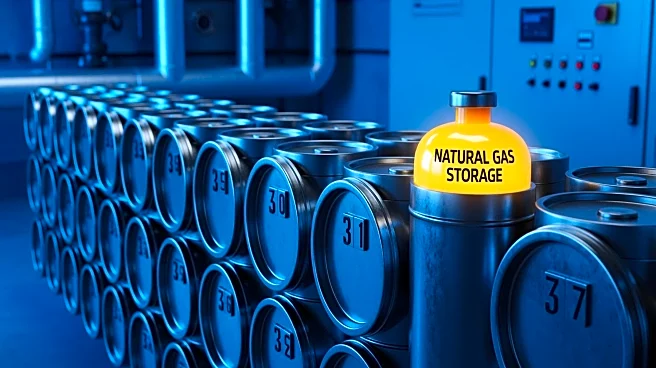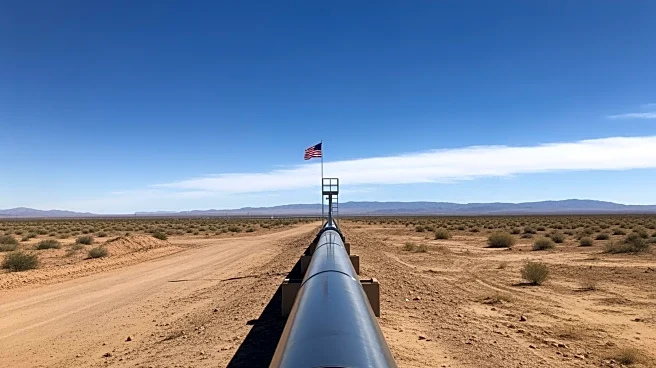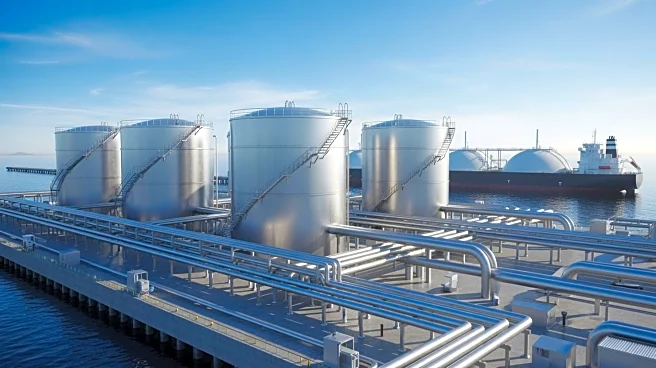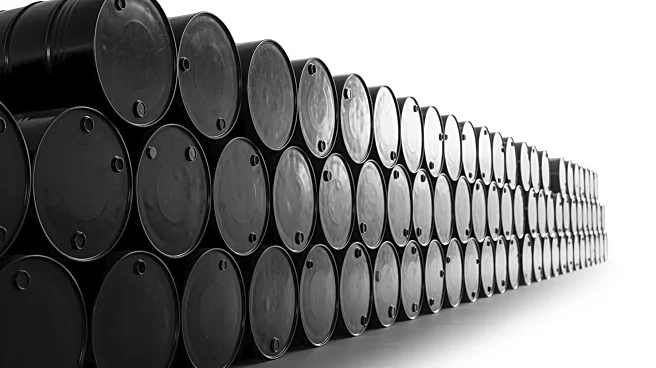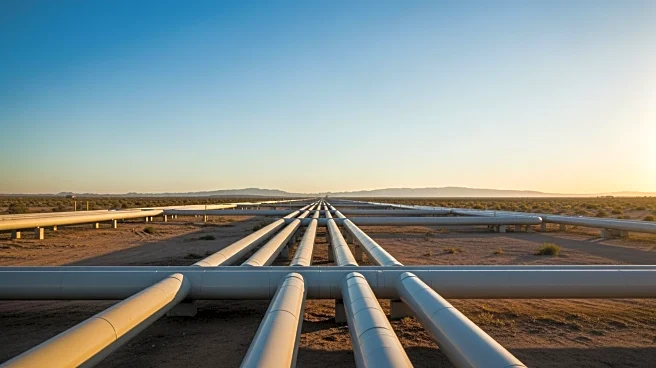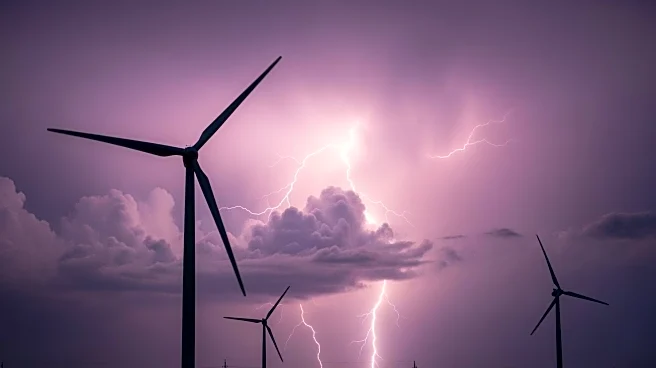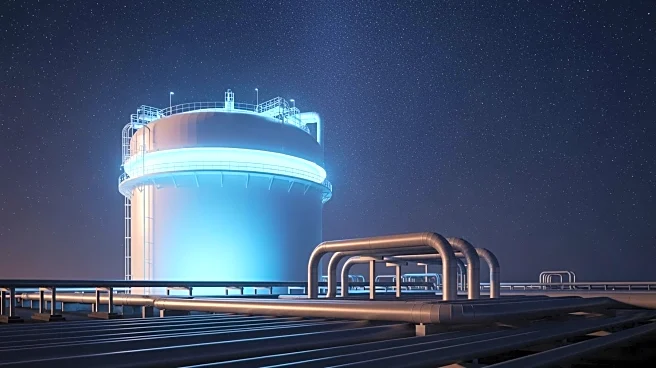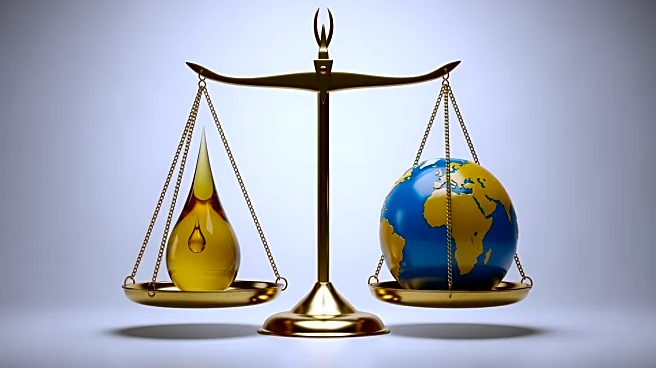What's Happening?
The Energy Information Administration (EIA) has released its latest report on U.S. natural gas inventories, indicating a net increase of 87 billion cubic feet (Bcf) as of October 17, 2025. The total working gas in storage now stands at 3,808 Bcf, which
is 34 Bcf higher than the same period last year and 164 Bcf above the five-year average of 3,644 Bcf. This increase is distributed across various regions, with the South Central region showing the largest rise of 34 Bcf. All regions reported a net increase in storage, and current levels are within the five-year historical range.
Why It's Important?
The increase in natural gas storage is significant for several reasons. It suggests a robust supply that could stabilize prices and ensure energy security as the U.S. heads into the winter months, a period typically marked by higher demand for heating. This surplus could also impact the natural gas market by potentially lowering prices, benefiting consumers and industries reliant on natural gas. Additionally, the higher storage levels compared to historical averages indicate a strong production capacity, which could influence future export strategies and domestic energy policies.
What's Next?
As the U.S. approaches the winter season, the focus will likely shift to monitoring consumption rates and weather patterns, which could affect future storage levels. Energy companies and policymakers will be watching these trends closely to adjust production and distribution strategies accordingly. The EIA's future reports will be critical in assessing whether the current surplus can be maintained or if adjustments in production are necessary.
Beyond the Headlines
The increase in natural gas storage also highlights the ongoing advancements in extraction and storage technologies, which have enabled higher efficiency and capacity. This development could have long-term implications for the U.S. energy landscape, potentially reducing reliance on foreign energy imports and supporting the transition to cleaner energy sources by providing a stable backup to renewable energy systems.
